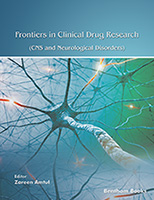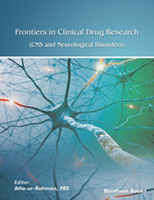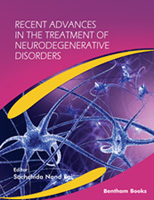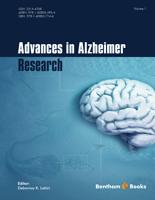It has been long been known that aging individuals with Down syndrome (DS) develop Alzheimer’s
disease (AD)-related pathology [1] and have an increased risk of dementia [2]. As the most common
form of live-born aneuploidy [3], DS affects 6 million people worldwide. The condition is associated
with varying degrees of cognitive, behavioral, and psychological disturbances. Fortunately, significant
advances in social and medical care have dramatically extended the life span of affected individuals in
recent years. Whereas the average life expectancy was approximately 9 years of age in 1929 [4], it was
approximately 60 years of age in 2000. Yet accompanying this increase is an ever-expanding
proportion of people affected by early-onset AD, creating an imperative to disentangle the shared
pathogenic mechanisms that underlie cognitive decline in both disorders. Emboldened by this
challenge, a number of scientists from across the world have increasingly made effective and efficient
progress towards understanding the genetic, neuropathological, and clinical correlates associated with
cognitive decline in DS and AD. Indeed, a review of PubMed reveals that more than 100,000 articles
have been published on topics related to AD (using term “Alzheimer’s disease” or “Alzheimer
disease”) and 18,000 articles have been published on DS (“Down syndrome” or “Down’s syndrome”)
since 1985. Comparatively, there were only 1900 papers that examined topics related to both DS and
AD (approximately < 2% of the total). Notwithstanding, few resources have attempted to
comprehensively summarize the tremendous progress that has been made in this field in recent years.
To fill this void, we have assembled a team of world-renowned scientists in order to gather a
compendium on the topic of shared pathogenic mechanisms in DS and AD.
Accordingly, in Chapter 1, Dr. Elizabeth Pohlman chronicles a history of changing societal attitudes
towards persons with DS and AD and, in so doing, acknowledges responses that have ranged from
deprivation and abuse, tolerance and protection, understanding and acceptance, to one that
increasingly approximates full social and medical inclusion. Dr. Pohlman highlights current challenges
that face contemporary society, particularly those deriving from the promise of cognitive enhancing
therapies. Through a frank and honest discussion of this topic, she challenges us to consider the full
gamut of ethical and political issues related to science and medical care for persons with DS and AD.
In Chapter 2, Drs. Capone and O’Neil provide professionals with a framework for the general
evaluation and management of medical care for persons with DS. Due attention is given to clinical
conditions that are frequently observed in this population (e.g., mental health and sensory issues,
seizure and sleep disorders, orthopedic abnormalities, feeding and swallowing difficulties, and cardiac
impairments) and how these conditions present throughout the lifespan. Accordingly, this section
fosters an awareness of how optimal medical management can be used to improve overall health and
quality of life for affected individuals.
In Chapter 3, Dr. Shoumitro Deb describes the best practice for making an early and accurate
diagnosis of dementia in aging persons with DS and long-standing cognitive impairment. Throughout
the text, he carefully articulates characteristic similarities and differences in the phenotypic expression
of dementia in adults with DS and AD. Moreover, he details how neuropsychological tests and
informant-rated scales can be used to gather longitudinal information to detect subtle changes in status
in aging adults with DS and, in turn, to optimize dementia care and intervention.
In Chapter 4, Dr. Shoumitro Deb provides a foundation to better understand the origin of problem
behaviors frequently exhibited by persons with dementia. Moreover, he describes key supports that
can be utilized to promote the wellbeing of affected individuals, including pharmacologic and nonpharmacologic interventions. Finally, he underscores the importance of a multidisciplinary
approach to care to better meet the diverse service needs of adults with dementia and cognitive
disability who reside in the community.
In Chapter 5, Dr. Damien Colas provides compelling evidence that sleep abnormalities contribute to
cognitive dysfunction in both DS and AD. Initially he begins with an overview of sleep neurobiology,
the mechanisms that regulate the sleep-wake cycle, and the central functions of sleep. Following this,
he describes sleep abnormalities common to DS and AD and explains how sleep-based cognitive
interventions may one day be utilized to mitigate cognitive dysfunction in both populations.
In Chapter 6, Dr. Gulati and colleagues provide compelling evidence that gene dosage abnormalities
contribute to seizure disorder and cognitive dysfunction in DS and AD. Indeed, it has been shown that
patients with AD exhibit an increased risk of focal and generalized seizures whereas older persons
with DS exhibit an increased rate of late onset myoclonic epilepsy. Accordingly, data presented in this
chapter clearly establishes an imperative for the earlier detection and management of seizure disorder
to promote more positive outcomes in both the DS and AD population.
In Chapter 7, Dr. Head and colleagues demonstrate how in vivo neuroimaging technology is
currently being used to study changes in cognition, function, and brain structure in aging adults with
DS. Threaded throughout the text is a frank appraisal of the strengths and weaknesses of the various
approaches along with a discussion of future opportunities, including widespread deployment of these
technologies for earlier diagnosis and intervention. Clearly articulated in this chapter is the promise
that technology holds for elucidating the neurobiological mechanisms that underlie dementia and for
evaluating candidate therapeutics.
In Chapter 8, Dr. Pooler and colleagues carefully detail the neuropathological features of the DS
brain. Documented in this chapter are characteristic lesions that occur (abnormal amyloid
accumulation, tau deposition, synaptic loss, and brain atrophy) with disease progression. Following
this is a description of regionally specific neuronal vulnerability commonly seen in DS and AD.
Specifically noted are intraneuronal accumulations of Aβ in the DS brain (occurring as early 4 years)
in a pattern that is similar to that seen in familial AD. The chapter concludes with a summary of the
effects of a number of triplicated and non-triplicated genes on DS/AD pathogenesis.
In Chapter 9, Drs. Wilcock and Head discuss the relevance of inflammatory processes in the
pathophysiology of AD and DS. In doing so, they successfully link the role of these processes to the
accumulation of Aβ in the brain before discussing how immunotherapies may be utilized to lower
brain amyloid levels and modify disease progression. By extrapolating findings from studies of AD,
they offer evidence that a host of triplicated gene(s) on HSA21 may contribute to inflammatory
processes and dementia in mouse models of DS.
In Chapter 10, Dr. Carmen Martínez-Cué and colleagues explore various transgenic and trisomic
mouse models developed to recapitulate AD and DS phenotypes, respectively. This section
demonstrates how, despite a number of inherent limitations, the various models have been strategically
exploited to uncover the relationship between overexpression of genes and the cellular and molecular
mechanisms implicated in AD and DS. Furthermore, a discussion on the vital role that these models
play in the development and testing of pharmacotherapeutics is presented.
In Chapter 11, Dr. Kumar Sambamurti and colleagues presents evidence that the amyloid precursor
protein gene (APP) plays a vital role in the pathogenesis of both DS and AD. APP is among the ~ 700 HSA21 genes typically triplicated in DS. Yet, it has been shown that adults with DS without
triplication of APP do not show AD-related pathology, suggesting that APP contributes of ADpathology
in DS. Further supporting this notion is evidence from mouse models of DS and AD that
demonstrate that APP is both necessary and sufficient for neurodegeneration. Based upon this
rationale, this section ends with a summary of therapeutic strategies that target APP in AD and DS.
In Chapter 12, we (C. Phillips and A. Salehi) review a bevy of neuropathological and biochemical
studies implicating monoaminergic dysfunction and cognitive impairment in DS and AD. Indeed,
convergent evidence now clearly demonstrates that neurotransmitter imbalances contribute to the
cognitive and behavioral abnormalities commonly seen in both disorders. Fortunately, a number of
clinical and preclinical studies suggest that treatments that mitigate neurotransmitter imbalances can
be used to mitigate cognitive dysfunction, establishing a warrant for future clinical trials in this area.
The ultimate desired outcome for all preclinical research is the translation of findings into well-designed
and executed clinical trials. Recognizing this, Dr. Rafii critically reviews in Chapter 13 ongoing clinical
trials for cognitive dysfunction in DS. Of particular note is his prediction that continued advances in the
field will enable the deployment of active and/ or passive anti-beta-amyloid immunotherapy and Betasite
APP cleaving enzyme 1 (BACE) inhibitors in clinical trials for DS in the near future, therapeutic
strategies that could impose strong disease modifying effects and mitigate cognitive decline.
Given the evidence presented here, it becomes clear that DS represents a naturally occurring
population of individuals at increased risk for AD and, in turn, one that is well positioned to benefit
from early evaluation, monitoring, and therapeutic targeting of cognitive dysfunction. Moreover,
knowledge that shared pathogenic mechanisms underlie cognitive decline in both disorders suggests
that robust crosstalk among researchers from the DS and AD research communities may rapidly
accelerate the pace of scientific discovery. In keeping with this notion, it is our sincere hope that this
compendium can be leveraged to facilitate a dialogue among researchers, ignite further scientific
discovery, and improve patient care.
Cristy Phillips
DDepartment of Physical Therapy
Arkansas State University
Jonesboro, Arkansas
USA
Ahmad Salehi
Department of Psychiatry and Behavioral
Sciences
Stanford University School of Medicine and
VA Palo Alto Health Care System (WRIISC)
Palo Alto, California
USA
Michael Rafii
Department of Neurosciences
University of California, San Diego
San Diego, California
USA
REFERENCES
-
[1]
Wisniewski KE, Dalton AJ, McLachlan C, Wen GY, Wisniewski HM. Alzheimer’s disease in Down’s syndrome:clinicopathologic studies. Neurology 1985; 35(7): 957-61.
-
[2]
Holland AJ, Hon J, Huppert FA, Stevens F, Watson P. Population-based study of the prevalence and presentation
of dementia in adults with Down’s syndrome. Br J Psychiatry 1998; 172: 493-8.
-
[3]
Hassold T, Hunt P. To err (meiotically) is human: the genesis of human aneuploidy. Nat Rev Genet 2001; 2(4): 280-91.
-
[4]
Bittles AH, Glasson EJ. Clinical, social, and ethical implications of changing life expectancy in Down syndrome.
Dev Med Child Neurol 2004; 46(4): 282-6.
-
[5]
Glasson EJ, Sullivan SG, Hussain R, Petterson BA, Montgomery PD, Bitt s AH. The changing survival profile of
people with Down’s syndrome: implications for genetic counselling. Clin Genet 2002; 62(5): 390-3.
-
[6]
Yang Q, Rasmussen SA, Friedman JM. Mortality associated with Down’s syndrome in the USA from 1983 to
1997: a population-based study. Lancet 2002; 359(9311): 1019-25.









